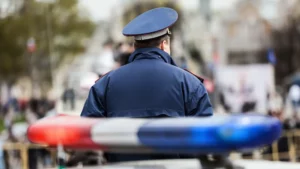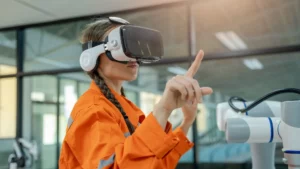Background
According to an FBI report (May 2022) the number of active shooter incidents in the U.S. rose 96.8% between 2017 – 2021 and by 52.5% from 2020 to 2021. To address this escalation, this research seeks to improve preparedness and response to active shooter events, which will save lives and reduce panic, anger and confusion during these events. To this end, how do factors such as building design, size and demographics of the crowd, and individual differences (i.e. familiarity with the building), impact human responses?
Objectives
To answer these questions, researchers conducted human subject experiments using Immersive Virtual Environments (IVEs). modeling the built environment in virtual reality, and simulating the behavior of both the adversaries and the crowd. By then exposing participants to an active shooter incident using IVE, the researchers could then measure responses in realistic ways that are not possible outside the laboratory environment. This research was funded by the NSF.
Results
Retrofitting buildings to be hardened against active shooters may slow such bad actors down, but it also slows victims down while trying to survive. Participants experienced the same active shooter incident in the virtual version of one building or the other; and the original building design shaved off 25% of their time to respond, so participants were significantly slower when the building was retrofitted to be hardened against active shooters.
The original building design also enabled the majority of people to run, whereas only about half chose to run (and the other half hide) when the building was retrofitted to be hardened against active shooters.
Next Steps
Since establishing this finding, we turned our sights to an even bigger problem that we discovered along the way. During focus groups with first responders, law enforcement, and experts in security, we heard one theme ring above others: training for active shooter incidents is critical to help people survive them. Unlike fire drills, these are very challenging (and expensive) to conduct live. So we have developed active shooter training in virtual reality, and now are testing the effectiveness for training workers what to do during such incidents.
Published academic research papers are available here. For more information Contact Us


